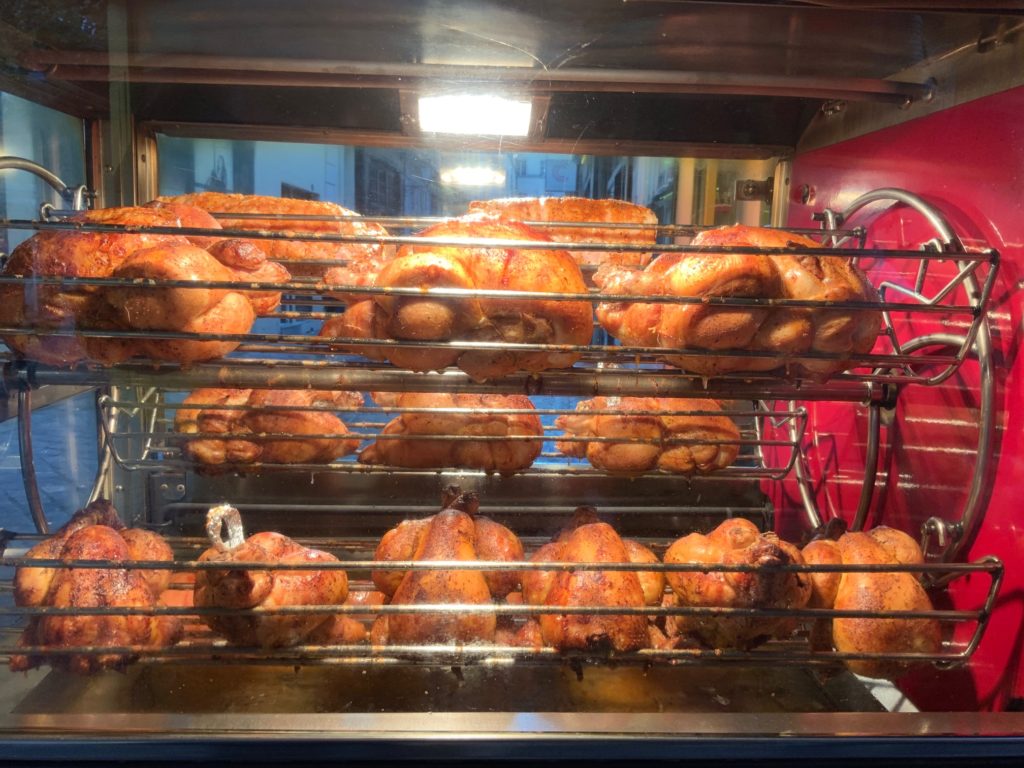Chicken is the indisputable king of the poultry flock. The French have had a long love affair with chickens and, as Julia Child and her co-authors of Mastering the Art of French Cooking noted, some of the most glorious dishes in French cuisine were created for this farmyard bird. Furthermore, almost all the fundamentals of French cookery and sauce making are practiced when preparing the myriad recipes for poultry. If you want to get more chicken recipes, you can always check this useful information at thorsfork.com.
For some, it might come as a surprise that the French hold chicken in such high regard, especially if they have only eaten generic, modern birds with meat that must be breaded, marinated, or smothered in cheese to make it palatable. These intensively reared, hybrid standard broilers do exist in France. They are befittingly called poulet ordinaire. However, unlike in most industrialized countries, several factors, such as a treasured gastronomic and cultural heritage, farmers devoted to raising quality birds, and, above all, consumers who demand flavorful chicken and will pay more for it, have led France to raise a large variety of slow-growing breeds, raised from egg to table to taste delicious.

5 tips for cooking chicken like the French
1. Buy the best bird you can afford.
Great dishes are built on good ingredients, and quality comes at a price. The price of a well-raised chicken in France can shock even those of us who have lived here for years and understand the cost of raising happy, healthy birds. But the French generally prefer to buy local, even if it empties their wallet. Supporting a fair, sustainable, and healthy food system in which human-size farms produce quality animals constitutes a core value for many.
2. Older means better.
In years gone by, age played a critical role in determining when to slaughter a bird and how to cook it. Traditionally, you grilled or fried tender young birds, roasted 5-12 month-old chickens, and stewed anything older. Comparatively, most chickens today go to slaughter at a relatively young age, which makes their flesh tender and suitable for all styles of cooking; however, young birds don’t have much flavor or texture. For that, you need time. Look for older, free-range birds that have spent most their lives outdoors walking around and building up muscles. Then, treat them to a longer cooking time at lower temperatures to bring out their best.

3. Keep the skin on!
Apart from adding flavor, the skin holds in moisture and prevents the meat from drying out. Even if you don’t intend to eat the skin, try leaving it on when you cook. Whether browning pieces for a casserole or stew or roasting a whole bird, searing the skin adds richness and depth of flavor to the final dish.
The secret to crispiness is making sure the skin is bone dry. Since French chicken doesn’t get dunked in a water bath (see below), you can easily transform it into golden crunchiness. Here’s how: Pat whole chickens or pieces with paper towels to remove as much moisture as possible before seasoning. If the chicken is still wet, leave it on the counter for at least 30 minutes before you start cooking.
If you have the time, you will achieve even better results if you generously salt your chicken inside and out and let it sit loosely covered with a tea towel in the refrigerator for at least six hours or overnight. Pre-salting the chicken initially pulls the moisture out; however, when you leave it for several hours, a kind of reverse osmosis occurs that draws both the moisture and flavor back into the meat. The result is tender meat and crispy, golden skin.

4. Bring your chicken up to room temperature before cooking.
Allowing chicken to come to room temperature before cooking will ensure juicer and more evenly cooked meat.
5. Take stock of leftovers.
One of the benefits of cooking a whole chicken is that you can make stock with the carcass. Chicken stock is incredibly easy to make. With just a few vegetables, bones, and water, you can create a rich base for sauces, gravy, risottos, and of course, soup.
Air-chilled Chicken: Why Buy It?
Chickens’ bodies must be cooled quickly after slaughter to reduce the spread of bacteria. In Europe, processors generally use chilled air to cool chicken carcasses. They hang birds on a track that moves through multiple chambers over several hours to bring their core temperature down to around 40°F (5°C). In other parts of the world, processors cool chickens by lowering them into vats of ice-cold water laced with chlorine and other disinfectants. This is a more efficient technique, but one that causes the carcass to absorb water, adding anywhere from 2– 12% to its body weight. This added moisture—not to mention the chlorine and other chemicals—dilutes the chicken’s natural juices, alters its taste, and makes it soggy, which prevents the skin from developing a glorious crispness when roasted.
Charlotte Puckette is a Grand Diplôme graduate of Paris’s Le Cordon Bleu, co-author of The Ethnic Paris Cookbook, as well as a private chef, caterer, cooking instructor, food consultant, and hostess.
